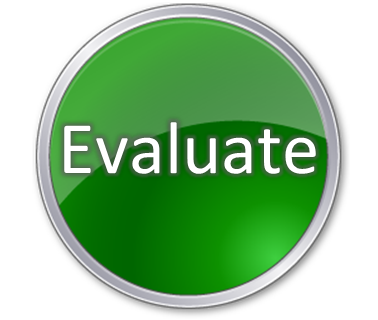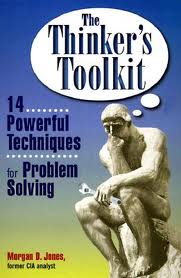
Hypothesis Testing Matrix
Create a matrix to test your solutions.

Hypothesis Testing Matrix tool ranks competing hypotheses by the least inconsistent evidence.
Only inconsistent evidence can help you distinguish the differences between your solutions.
Consistent evidence proves nothing, since it can support multiple hypotheses. Consistent evidence does not provide diagnosticity. In-other-words, consistent evidence does not help you choose which path to take.
The Hypothesis Testing Matrix is a simple matrix with your evidence listed down the left-hand column and your different hypotheses going across the top (see the diagram below).
Test Your Solutions
Step 1: First, you need to generate a number of plausible hypotheses. For help, see Hypothesis Generator, Multiple Hypothesis Generator, and Rival Hypotheses tools.
Step 2: List your hypotheses in the columns across the top of the form (shown below).
Step 3: List your significant evidence down the left-most column. Evidence is information that can either support or refute your hypotheses.

Step 4: Test the evidence for its consistency with each hypothesis. Use “C” for consistent, “I” for inconsistent, and “?” for ambiguous.
Step 5: You can reset the matrix by rewriting your hypotheses. You can also add new evidence or new hypotheses.
Step 6: Delete evidence that is 'consistent' with all hypotheses.
Step 7: Re-evaluate and confirm the validity of inconsistent evidence.
Step 8: Rank hypotheses by the weakness of the inconsistent evidence. In-other-words, the hypothesis with the least inconsistent evidence is the best one.
Hypothesis Testing Matrix Form: Use this form to test your different solutions.

PRINTABLE: Excel version of Hypothesis Testing Matrix.xlsx (Click link to download Excel version).
PRINTABLE: Word version of Hypothesis Testing Matrix.docx (Click link to download Word version).
PRINTABLE: PDF version of Hypothesis Testing Matrix.pdf (Click link to download PDF version).
Related Tools:
- Hypothesis Generator: Use this tool to create a potential solution.
- Multiple Hypothesis Generator: Use this tool to create multiple possible solutions.
- Rival Hypotheses: Create other ways to explain the same set of data.
- Analysis of Competing Hypotheses: Free computer program to evaluate multiple hypotheses.
- Create Solutions: This section of our Toolkit has many other tools for generating solutions.
Sources:
 |
The Thinker's Toolkit: 14 Powerful Techniques for Problem Solving by Morgan D. Jones, New York: Three Rivers Press, 1995. |

